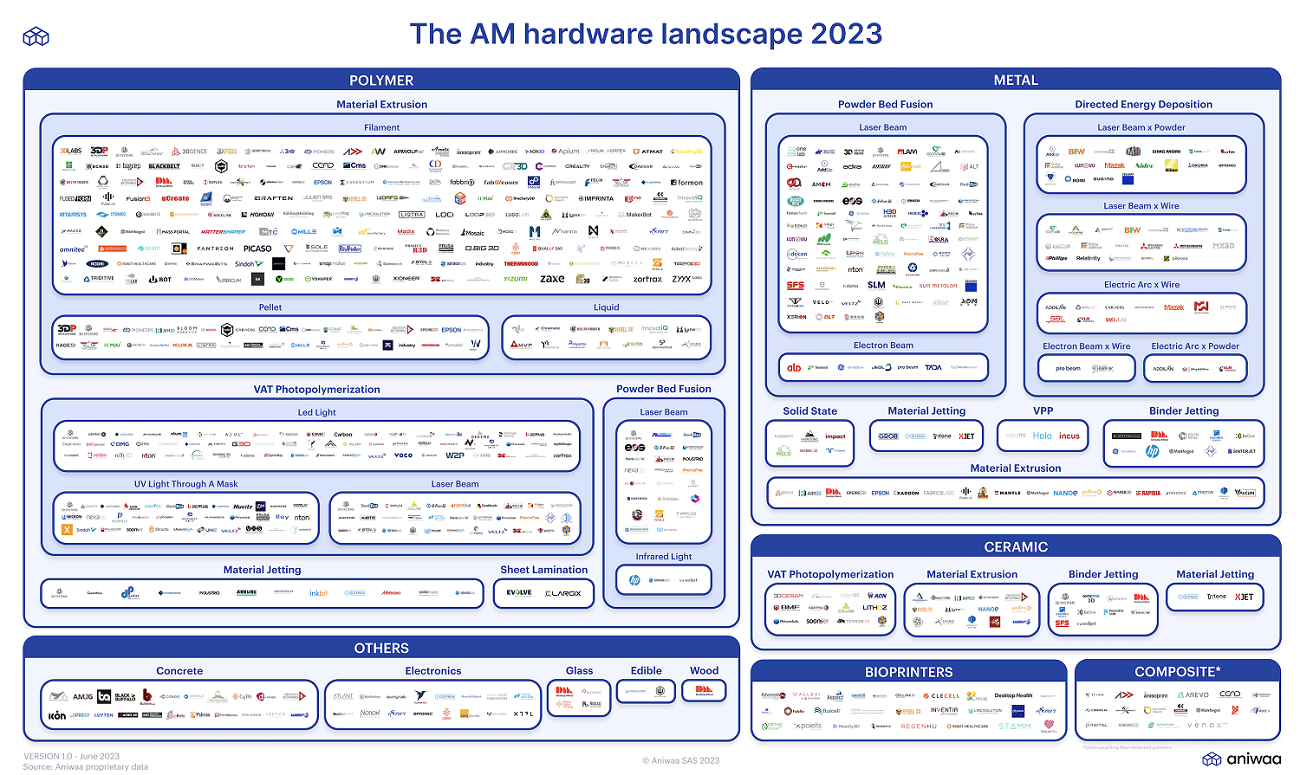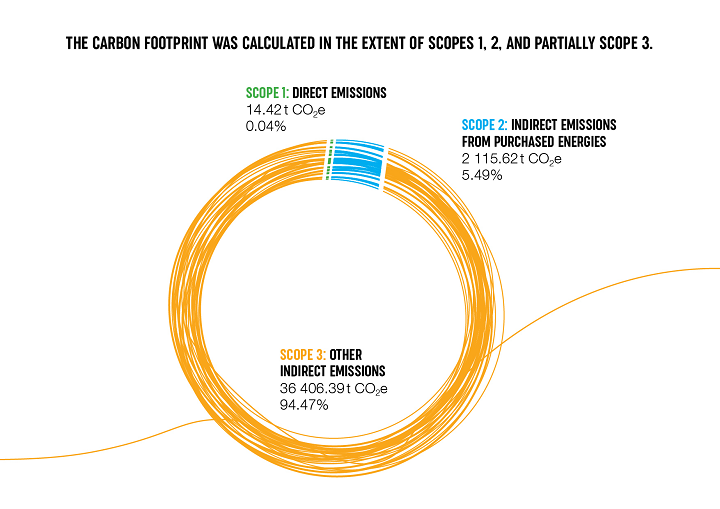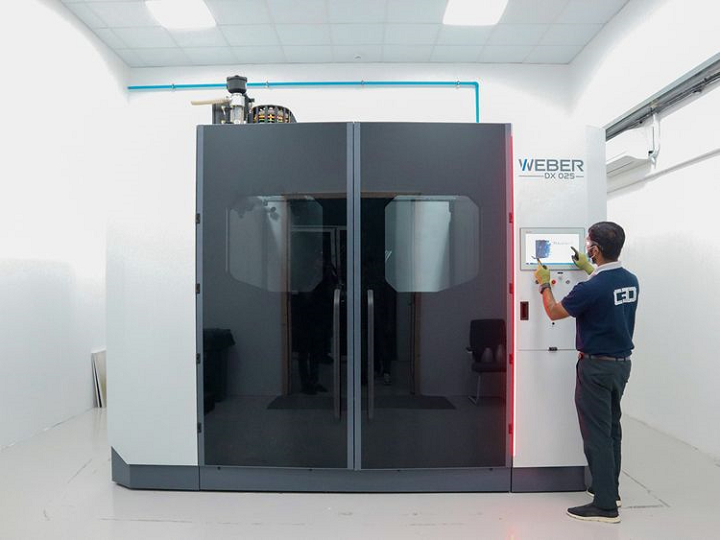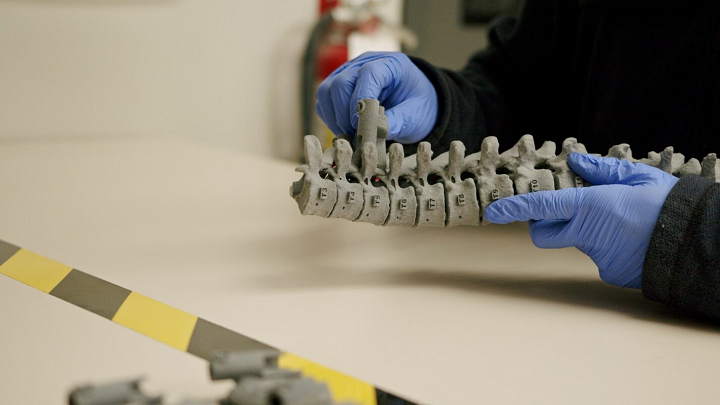In today’s 3D Printing News Briefs, Aniwaa has released the first edition of its AM hardware landscape infographic, and Prusa Research has presented its first sustainability report. C3D launched the Middle East’s first large-format 3D printing facility, and a team of researchers used 3D printing to develop new designer titanium alloys. Finally, Domin is using Renishaw’s AM technology to produce hydraulic valves, and Mighty Oak Medical is improving spinal surgery outcomes with HP’s AM technology.
Aniwaa Releases First Edition of AM Hardware Landscape Infographic
While consolidations are happening all the time, the additive manufacturing industry is still very fragmented. Online AM hardware B2B marketplace Aniwaa wanted to offer a comprehensive look at the active manufacturers in each market segment, and has released the first edition of its AM hardware landscape infographic. Over 500 active industrial AM manufacturers were mapped and categorized by technology, materials, and more, proving that Aniwaa is a trusted resource in the professional AM industry. Important findings include the continued dominance of polymer 3D printers, and the popularity in metal AM of laser powder bed fusion (LPBF) technology. Aniwaa also announced updates to its AM hardware database, adding new filtering options, incorporating the latest ASTM standards, and more. Another part of the release is the launch of Manufacturer accounts, which allows manufacturers to showcase their products and better manage their presence on the Aniwaa platform.
“At Aniwaa, we understand the challenges faced by professional buyers in navigating the complex additive manufacturing ecosystem. Our landscape infographic, combined with our product catalogs, provides buyers with a comprehensive view of all active manufacturers and solutions in each market segment. These insights are invaluable in their journey to make informed purchasing decisions,” said Martin Lansard, Co-Founder of Aniwaa.
“Our goal is to provide manufacturers with the tools they need to succeed in this competitive industry. Our platform serves as a gateway for manufacturers to showcase their products, reach new markets, and ultimately achieve their goals. We believe that by enabling seamless and valuable interactions between manufacturers and buyers active in the market, we are driving the industry forward.”
Prusa Research Presents First Sustainability Report
Prusa Research is now presenting its first sustainability report a year after publishing sustainability plans for the first time. Research and requests for user feedback yielded three topics that were deemed the most important: help users recycle useless prints and leftover filament, offer filament on spools without sides, and raise awareness about printing meaningful things. The first of three pillars of Prusa’s sustainability strategy is using 3D printing to solve contemporary environmental and social problems, and the company is working with others that use its 3D printers to make their operations more sustainable, as well as using the technology to help those wounded in the war in Ukraine and support handicapped sportsmen. The second pillar is trying to minimize the impact of its activities on the environment, and Prusa has started making recycled versions of its Prusament PLA and PETG, offering Prusament refills, reducing its water and energy consumption, and working on more ecological packaging and transport of its products. The third pillar is having fair relations with those that help Prusa successfully conduct its business, and the company is working to improve its work environment so it’s safer and friendlier, as well as being more transparent when discussing sustainability; for example, it’s stopped labeling PLA as biodegradable.
“The aim of the report is not to say that we excel in every aspect of the sustainability topic and that everything we do is the best thing to do. Our goal is to show you where we stand right now, what we’re good at, and what we’re just beginning with,” explained Vladimír Víšek, Head of Sustainability at Prusa Research. “Making the report itself was a good exercise for us: we summed up everything we do and found out where we don’t have e.g. data or haven’t started dealing with something yet.”
C3D Launches Middle East’s First Large-Format 3D Printing Facility
Dubai-based 3D printing services company C3D, part of the Chrysels Group of Companies, launched a first for the Middle East—the region’s first large-format 3D printing facility. Located in Dubai, the facility will support the growing demand for AM in the UAE’s industrial sector. The company is focused on promoting eco-conscious production and reducing waste, and so has invested in its first Weber additive manufacturing system, which is also the first in the Middle East. The Weber DX 025 features a build volume of 1600 × 1200 × 1300 mm³, RBG IP cameras for print monitoring, Bosch Rexroth linear units and CNC control, and uses recycled, sustainable plastic granules as the raw material. Now, the company can produce high-quality, large-scale prints more sustainably and at a faster pace.
“We were inspired to launch this pathbreaking technology here in Dubai, led by the visionary leadership of His Highness Sheikh Mohammed bin Rashid Al Maktoum, UAE Vice President and Prime Minister and Ruler of Dubai, who has always emphasized the importance of technology in driving progress and innovation in the UAE,” said Babu Radhakrishnan, Founding Partner of C3D. “Today, the UAE has made tremendous strides in the field of technology, becoming a global leader in many areas. From artificial intelligence to renewable energy, the UAE has demonstrated its commitment to creating a better future for its people and for the world. C3D is proud to be a part of this vision.”
Researchers Use 3D Printing to Develop New Titanium Alloys
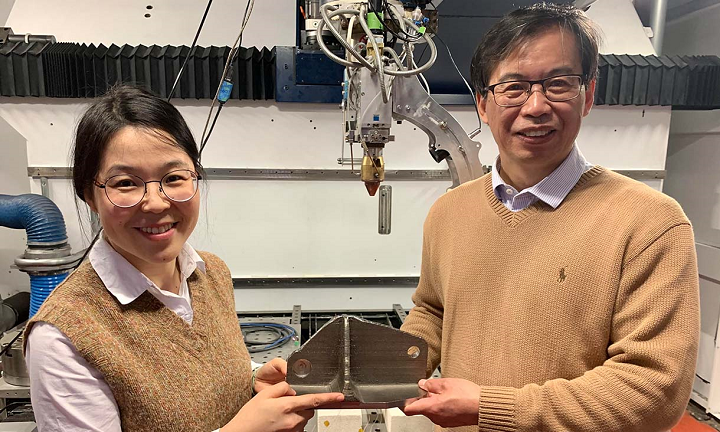 Team members Dr Tingting Song and Professor Ma Qian (left to right) with a titanium alloy part created with the laser 3D printer that the team used at RMIT University. (Note: this is not an alloy part that the team made for this research.) Credit: RMIT
Team members Dr Tingting Song and Professor Ma Qian (left to right) with a titanium alloy part created with the laser 3D printer that the team used at RMIT University. (Note: this is not an alloy part that the team made for this research.) Credit: RMITA team of researchers led by RMIT University and the University of Sydney, in collaboration with Melbourne-based Hexagon Manufacturing Intelligence and Hong Kong Polytechnic University, integrated alloy and 3D printing process designs to develop a new class of “designer” titanium alloys. These alloys, strong and not brittle under tension, could not only improve sustainability but also extend applications in the biomedical, aerospace, chemical engineering, energy, and space sectors. The alloys are made up of a mixture of alpha-titanium phase and beta-titanium phase crystals, stabilized and strengthened by inexpensive iron and oxygen, and 3D printed using Laser Directed Energy Deposition (L-DED). Additionally, the team used circular economy thinking in their design, and there is promise for printing the new titanium alloys out of low-grade materials and industrial waste, which could help lower the titanium industry’s high carbon footprint.
University of Sydney Pro-Vice-Chancellor, and co-lead researchers, Professor Simon Ringer, explained, “This research delivers a new titanium alloy system capable of a wide and tunable range of mechanical properties, high manufacturability, enormous potential for emissions reduction and insights for materials design in kindred systems.
“The critical enabler is the unique distribution of oxygen and iron atoms within and between the alpha-titanium and beta-titanium phases.
“We’ve engineered a nanoscale gradient of oxygen in the alpha-titanium phase, featuring high-oxygen segments that are strong, and low-oxygen segments that are ductile allowing us to exert control over the local atomic bonding and so mitigate the potential for embrittlement.”
Domin Uses Renishaw Metal AM to Print Hydraulic Valves
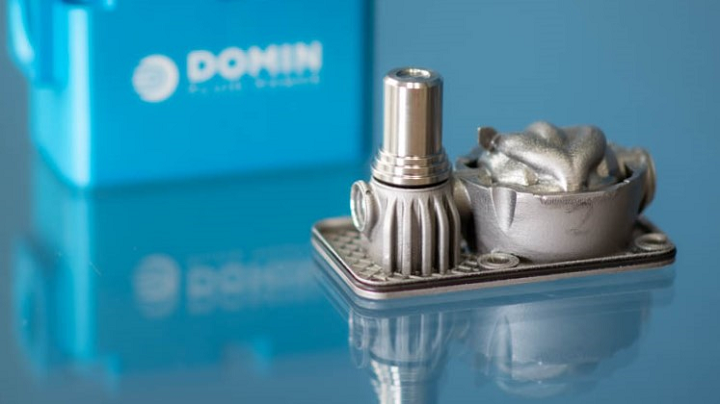 Deconstructed Domin valve
Deconstructed Domin valveFluid power specialist Domin needed to meet growing demand for its energy-efficient, high-performance hydraulic valves, and decided that metal 3D printing was the way to go. Global engineering technologies company Renishaw supplied its RenAM 500Q system, with four high-powered 500W lasers and an intelligent gas flow system, to Domin’s new Technology Centre in the UK, which allows the company to design complex geometries with internal features, like efficient stiff structures, that traditional manufacturing methods cannot achieve. Domin has combined metal AM with big data, high-speed motor control, connected technology, and more to create a more competitive range of servo proportional hydraulic valves, while also reducing waste and helping to save the hydraulics industry one gigatonne of CO2e by 2030.
“We designed these servo valves to achieve a better-performing, more sustainable product at a lower price point. The success of these valves in a broad range of applications means demand is outpacing what we can supply. Renishaw is the go-to choice for coupling productivity with quality, and we expect that the increased capacity the new AM system provides will allow us to maintain low production turnaround times and deliver consistently high quality to our growing customer base,” said Domin CEO Marcus Pont.
“Most hydraulic systems today only operate at 23 per cent efficiency, resulting in the wastage of billions of kilowatt-hours every year. Globally, hydraulics produces twice the CO2e emissions of the aerospace industry (1). Over its lifetime, each of these game-changing valves has the potential to save multiple tonnes of CO2e, and with them we can spearhead the advance of the fluid power industry towards a sustainable future.”
Mighty Oak Medical Using HP’s Multi Jet Fusion to Improve Spinal Surgeries
Medical device development company Mighty Oak Medical specializes in creating and commercializing patient-specific spinal solutions, and is partnering with HP to revolutionize healthcare applications with its Multi Jet Fusion 5200 3D printers. The technology will be used to print personalized surgical guides and models for its flagship FDA-cleared and CE-mark FIREFLY product, a patient-specific pre-surgical planning and navigation platform. FIREFLY’s accurate concierge pre-surgical planning helps increase safety and precision, while also reducing the efficiency challenges common in spinal fusion surgery when placing pedicle screws, and HP’s industrial MJF solution will help the company decrease print turnaround times for FIREFLY, which means more patients can benefit from personalized care. Since bringing manufacturing in-house and installing HP’s 5200 printers on its factory floor, Mighty Oak Medical is reporting improved replicability and consistency in placement of pedicle screws, thanks to the patient-specific guides 3D printed out of HP’s strong and detailed 3D High Reusability PA 12 material. The material’s surface finish has a higher contrast, which makes it much easier for surgeons to check for gaps and read markings in the OR.
“It was important for us to maintain our focus on the spine and develop innovative solutions that make surgical procedures safer and more efficient. We have always viewed 3D printed, patient-specific solutions as an ideal way to achieve those two objectives, and now, thanks to HP’s 3D printing technology, the healthcare industry is undergoing a massive transformation in terms of the solutions, patient experience and outcomes new 3D printed medical devices can provide,” said Heidi Frey, President at Mighty Oak Medical.
Subscribe to Our Email Newsletter
Stay up-to-date on all the latest news from the 3D printing industry and receive information and offers from third party vendors.
Print Services
Upload your 3D Models and get them printed quickly and efficiently.
You May Also Like
3D Printing News Briefs, June 11, 2025: Sustainability, Automotive Tooling, & More
We’re starting with sustainability news in today’s 3D Printing News Briefs, as EOS has strengthened its commitment on climate responsibility, and Zestep is making 3D printing filament out of eyewear...
3D Printing 50 Polymer Stand-In Parts for Tokamaks at the PPPL & Elytt Energy
Of all the world’s things, a tokamak is one of the hardest, most complex, expensive and exacting ones to make. These fusion energy devices make plasma, and use magnets to...
3D Printing News Briefs, May 17, 2025: Color-Changing Materials, Humanoid Robot, & More
We’re covering research innovations in today’s 3D Printing News Briefs! First, Penn Engineering developed 3D printed materials that change color under stress, and UC Berkeley researchers created an open source,...
Firehawk Aerospace Partners with JuggerBot 3D, Gets $1.25M from AFWERX for 3D Printed Propellants
Texas-based Firehawk Aerospace, an advanced energetic materials firm that works with aerospace and defense applications, announced a strategic partnership with JuggerBot 3D, an Ohio-based large-format 3D printer manufacturer. Together, the...


